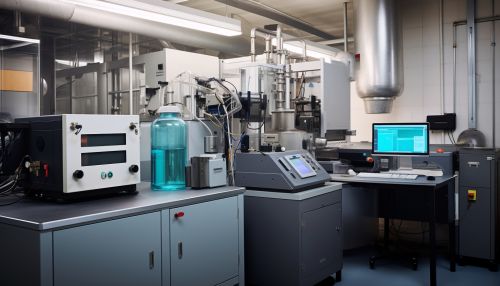Potassium-Argon Dating
Introduction
Potassium-Argon dating, also known as K-Ar dating, is a radiometric dating method used in geochronology and archaeology. It is based on the measurement of the product of the radioactive decay of an isotope of potassium (K) into argon (Ar). Potassium is a common element found in many materials, such as micas, clay minerals, tephra, and evaporites.


Principles of Potassium-Argon Dating
The K-Ar dating technique was one of the earliest isotope dating methods, developed soon after the discovery of radioactive potassium, and provided an important dating technique for samples without carbon-14. The method works by the radioactive decay of potassium-40 to argon-40, which is a gas. When a rock is formed, especially by volcanic activity, the potassium-40 decays at a known rate, and the argon-40 that is formed is trapped inside the rock. By comparing the amount of potassium-40 to argon-40 in a sample, and knowing the decay rate, the age of the sample can be calculated.
Methodology
The methodology of K-Ar dating is complex, involving several stages of preparation and analysis. The first step is to crush the rock or mineral sample to release the argon-40 gas. This is then purified and the amount of argon-40 and potassium-40 is measured using a mass spectrometer. The ratio of these two isotopes is then used to calculate the age of the sample.
Applications
K-Ar dating has been used to date volcanic rocks from thousands to billions of years old. It has also been used to date lunar samples returned from the Apollo Moon missions, and to date meteorites. In archaeology, K-Ar dating is used to date sites that are too old for radiocarbon dating.
Limitations and Potential Errors
Like all dating methods, K-Ar dating has its limitations and potential errors. These include contamination of the sample, loss of argon-40 due to weathering, and inaccuracies in the measurement of the decay rate of potassium-40. Despite these limitations, K-Ar dating remains a valuable tool for geologists and archaeologists.
